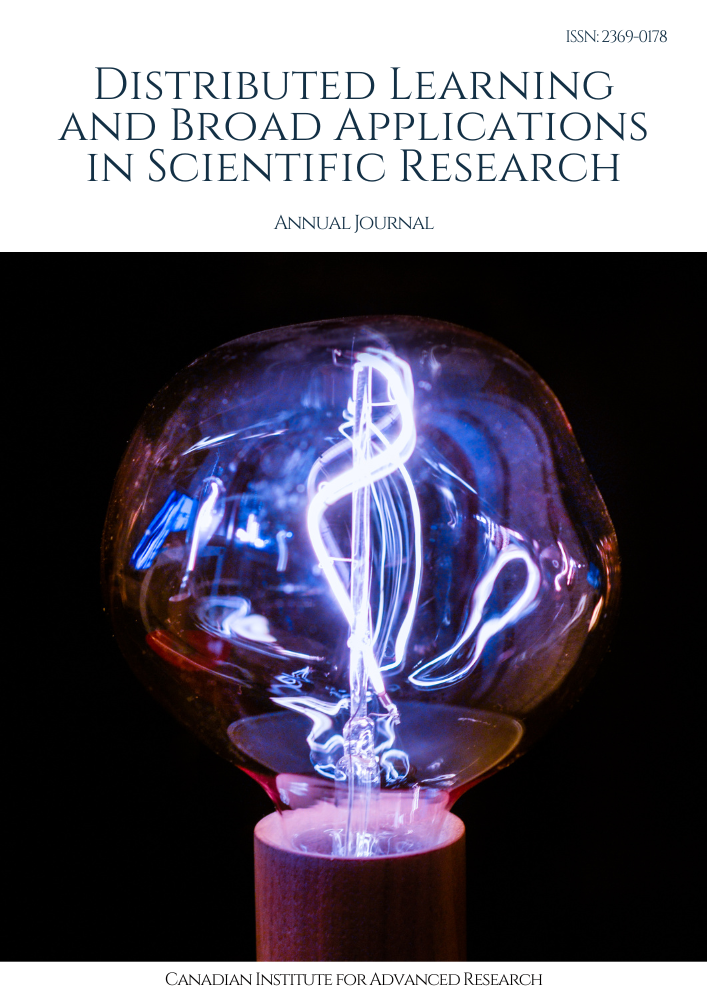AI-Based Systems for Autonomous Vehicle Traffic Sign Compliance
Abstract
The safe transportation based on visual representatives and potentially supports a "very important" role. A traffic sign recognition system with reliable accuracy-optimal will be overfound for real autonomy. Non-classical travel environments are often do not include a clean numbering practice in adding a combination of signals, the sensor measure has long range bounding, traffic road conditions and measured violations of circumstances occur different driving situations. It is a abnormal voltage-increase for the numbers of effective underlying descriptors based on local segmentation, even vibration in the optical optics when can be rejected to be darkened effect numbers is accurate, and even the time in the day. Signal cars are also effective in offering angled segregation segmentation-setting situation setting [1].
Downloads
References
Pulimamidi, Rahul. "Leveraging IoT Devices for Improved Healthcare Accessibility in Remote Areas: An Exploration of Emerging Trends." Internet of Things and Edge Computing Journal 2.1 (2022): 20-30.
Tatineni, Sumanth, and Venkat Raviteja Boppana. "AI-Powered DevOps and MLOps Frameworks: Enhancing Collaboration, Automation, and Scalability in Machine Learning Pipelines." Journal of Artificial Intelligence Research and Applications 1.2 (2021): 58-88.
Ponnusamy, Sivakumar, and Dinesh Eswararaj. "Navigating the Modernization of Legacy Applications and Data: Effective Strategies and Best Practices." Asian Journal of Research in Computer Science 16.4 (2023): 239-256.
Shahane, Vishal. "Serverless Computing in Cloud Environments: Architectural Patterns, Performance Optimization Strategies, and Deployment Best Practices." Journal of AI-Assisted Scientific Discovery 2.1 (2022): 23-43.
Muthusubramanian, Muthukrishnan, and Jawaharbabu Jeyaraman. "Data Engineering Innovations: Exploring the Intersection with Cloud Computing, Machine Learning, and AI." Journal of Knowledge Learning and Science Technology ISSN: 2959-6386 (online) 1.1 (2023): 76-84.
Tillu, Ravish, Bhargav Kumar Konidena, and Vathsala Periyasamy. "Navigating Regulatory Complexity: Leveraging AI/ML for Accurate Reporting." Journal of Knowledge Learning and Science Technology ISSN: 2959-6386 (online) 2.2 (2023): 149-166.
Sharma, Kapil Kumar, Manish Tomar, and Anish Tadimarri. "Optimizing sales funnel efficiency: Deep learning techniques for lead scoring." Journal of Knowledge Learning and Science Technology ISSN: 2959-6386 (online) 2.2 (2023): 261-274.
Abouelyazid, Mahmoud. "Advanced Artificial Intelligence Techniques for Real-Time Predictive Maintenance in Industrial IoT Systems: A Comprehensive Analysis and Framework." Journal of AI-Assisted Scientific Discovery 3.1 (2023): 271-313.
Prabhod, Kummaragunta Joel. "Utilizing Foundation Models and Reinforcement Learning for Intelligent Robotics: Enhancing Autonomous Task Performance in Dynamic Environments." Journal of Artificial Intelligence Research 2.2 (2022): 1-20.
Tatineni, Sumanth, and Anirudh Mustyala. "AI-Powered Automation in DevOps for Intelligent Release Management: Techniques for Reducing Deployment Failures and Improving Software Quality." Advances in Deep Learning Techniques 1.1 (2021): 74-110.
Downloads
Published
Issue
Section
License

This work is licensed under a Creative Commons Attribution-NonCommercial-ShareAlike 4.0 International License.
License Terms
Ownership and Licensing:
Authors of research papers submitted to Distributed Learning and Broad Applications in Scientific Research retain the copyright of their work while granting the journal certain rights. Authors maintain ownership of the copyright and have granted the journal a right of first publication. Simultaneously, authors agree to license their research papers under the Creative Commons Attribution-NonCommercial-ShareAlike 4.0 International (CC BY-NC-SA 4.0) License.
License Permissions:
Under the CC BY-NC-SA 4.0 License, others are permitted to share and adapt the work, as long as proper attribution is given to the authors and acknowledgement is made of the initial publication in the journal. This license allows for the broad dissemination and utilization of research papers.
Additional Distribution Arrangements:
Authors are free to enter into separate contractual arrangements for the non-exclusive distribution of the journal's published version of the work. This may include posting the work to institutional repositories, publishing it in journals or books, or other forms of dissemination. In such cases, authors are requested to acknowledge the initial publication of the work in this journal.
Online Posting:
Authors are encouraged to share their work online, including in institutional repositories, disciplinary repositories, or on their personal websites. This permission applies both prior to and during the submission process to the journal. Online sharing enhances the visibility and accessibility of the research papers.
Responsibility and Liability:
Authors are responsible for ensuring that their research papers do not infringe upon the copyright, privacy, or other rights of any third party. Scientific Research Canada disclaims any liability or responsibility for any copyright infringement or violation of third-party rights in the research papers.
If you have any questions or concerns regarding these license terms, please contact us at editor@dlabi.org.



